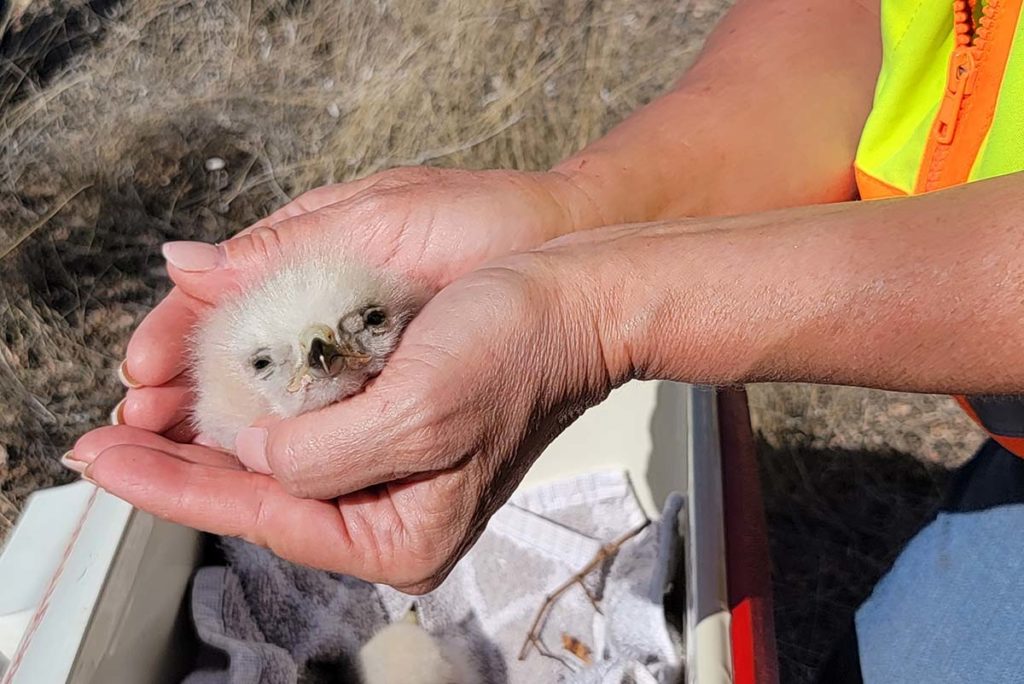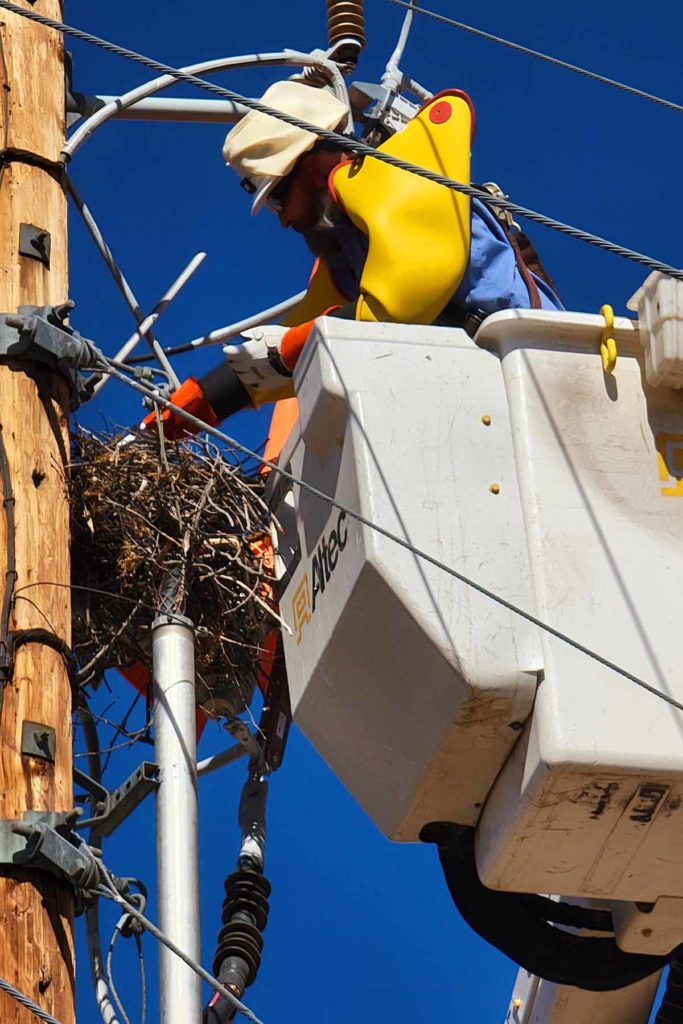
When Trico Electric Cooperative journeyman lineman Bryan English peered into the thick rustic nest of a Harris’s hawk that was lodged against a power pole and distribution lines, he was met with a pleasant surprise: two live hatchlings and an egg.
He then began a precarious and delicate rescue.
English, a veteran power line troubleshooter for the Marana, Arizona-based co-op, donned thick rubber gloves and installed heavy rubber blankets and hoses to cover the energized lines before collecting the speckled egg and the fuzzy white chicks. Adult hawks swooped about as he worked.
“It was like trying to scramble eggs without breaking anything,” said English, recalling the mission that early June day. “It all worked out.”

He placed the egg and the baby birds in a small cooler provided by a wildlife rehabilitation organization Trico had called to the scene. Back in Phoenix, Liberty Wildlife nourished the chicks and incubated the egg. When the three birds are old enough, the wildlife group will match them with an adult female Harris’s hawk who will teach them to hunt and fend for themselves.
Harris’s hawks are protected under the Migratory Bird Act, and Trico, like other electric co-ops, has an avian protection plan. In Trico’s case, the plan includes a special permit to handle raptors and remove nests from harm’s way when necessary for safety and electric reliability.
Trico recently updated its nearly 20-year-old avian protection plan and moved it from two binders to a user-friendly format accessible to co-op staff in various forms, including on tablets for those in the field.
After removal of the nest from co-op equipment, the family unit of Harris’s hawks, a species that nest all year long, will find another location to call home, English said.
“At Trico, we always put bird guards up and flappers and do everything we can to protect wildlife around our service area,” he said. “It’s nice to work at a place that values our wildlife.”
English is often called to address recovery of dead birds. In those cases, they’re taken to a veterinarian for an autopsy and the feathers are sometimes distributed to Native Americans who may use them in clothing or ceremonies, he said.
“Usually when I show up, it’s not something I can actually help,” he said. “It’s nice to save some birds.”
From spotting the nest on a routine inspection to alerting English and getting a wildlife biologist to the scene, the hawk hatchlings rescue exemplifies the co-op’s avian protection plan in action, said Wes Crane, environmental supervisor at Trico.
“The things we do to protect wildlife and birds are integrated throughout the co-op,” Crane said. “It’s built into our products, our systems, materials and protective gear. Having that buy-in from the bottom all the way to the pole top makes a huge difference.”
Learn more about avian protection plans and NRECA’s Avian Protection Toolkit.
Cathy Cash is a staff writer for NRECA.